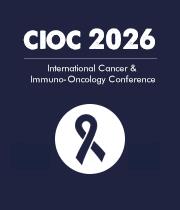Title : Personalized radiation oncology in periampullary carcinoma: Integrating Circulating Tumor DNA (ctDNA) and Stereotactic Body Radiation Therapy (SBRT) for precision monitoring and treatment optimization
Abstract:
New molecular diagnostic tools, such as circulating tumor DNA (ctDNA), and an emphasis on pinpoint accuracy are changing radiation oncology. By integrating stereotactic body radiation therapy (SBRT) with ctDNA tracking from liquid biopsies, this study investigates a new way to treat and monitor patients with preampullary cancer. It is difficult to discover the ailment early and track patients after treatment because of how rare and severe it is. Using circulating tumor DNA (ctDNA) is a great technique to detect molecular recurrence, minimal residual disease (MRD), and monitor tumor dynamics in real-time. Unlike standard imaging and blood tumor indicators, ctDNA can detect molecular relapse months before it shows up on imaging or in the body, allowing therapy to begin earlier. There is hope that ctDNA in SBRT may alter treatment scheduling, radiation dosage, and planning thanks to the therapy's focused and physiologically effective character. By testing tumor samples for specific genetic alterations, this method generates ctDNA tests. Consistent and painless tracking is possible with as little as a few blood draws. In order to monitor tumor response, treatment resistance, and subclinical recurrence, physicians can measure ctDNA levels before, during, and after SBRT. This feedback mechanism allows us to use larger radiation doses when molecules are persistent. We can combine SBRT with systemic medications like immunotherapy when resistant clones are present. By measuring genomic variables like mutational load, actionable mutations, and gene signatures that show radiation sensitivity, Genomic Adjusted Radiation Dose (GARD) methods allow one to alter the amount of radiation they receive. A targeted strategy that minimizes radiation damage to neighboring organs is necessary for efficient cancer control in the anatomically intricate periampullary region. It is crucial to discover MRD early on since preampullary cancer often recurs despite intense multimodal treatment. Salvation treatment based on ctDNA monitoring may be available to patients with normal x-rays, which could speed up their recovery. Finally, CtDNA gives you control over the duration of an adjuvant or de-escalation treatment, so you can avoid unnecessary side effects without sacrificing your quality of life. I will go over the latest findings that highlight the importance of ctDNA in the digestive system, pancreas, and stomach cancer in great detail. Topics covered in this article include assay standardization, evaluation of small differences, and practical applications of these results. It will focus on the following procedures as they relate to clinical studies that use MRD-guided radiation therapy specifically. Better patient-centered care, less side effects, and improved fatality rates would be desirable outcomes of combining SBRT with liquid biopsies and other types of high-precision radiation therapy in this era of highly focused cancer treatments. This approach may lead to adaptive, genomics-driven radiation oncology for rare and difficult-to-treat malignancies such as preampullary carcinoma.



